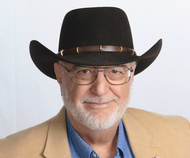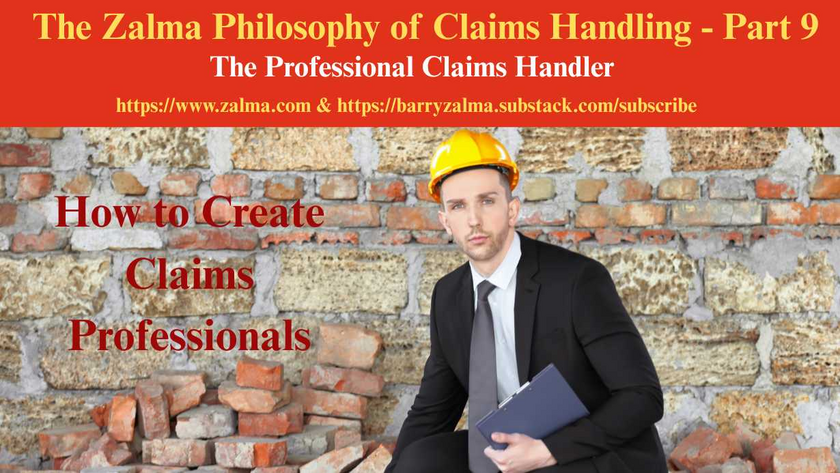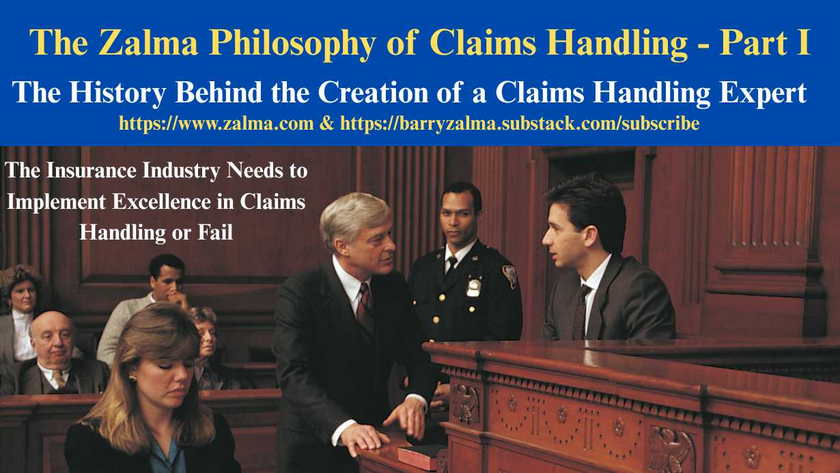
Read the full article at https://lnkd.in/gDfcz8wt; see the full video at https://lnkd.in/gK8bew7B and at https://lnkd.in/gKsaXJFJ and at https://zalma.com/blog plus more than 4750 posts.
How Most Get Away With Insurance Fraud
Post 4764
For reasons known only to governmental entities some insist on categorizing fraud into both “hard” and “soft” fraud. By so doing the governmental entities that so categorize fraud make one type of fraud less heinous and less criminal than the other. Fraud, whether categorized “soft” or “hard,” are criminal and if a person is tried and convicted of fraud both can be sent to jail for the same amount of time.
The types of insurance fraud some call “soft fraud” are found in every type of claim presented to an insurer.
Soft fraud, which is sometimes called opportunity fraud, occurs when a policyholder or claimant exaggerates a legitimate claim.... According to the Insurance Research Council, soft fraud is far more frequent than hard fraud. Because of the frequency of soft fraud, it adds more to overall claims cost than hard fraud does.
Soft fraud occurs when a policyholder exaggerates an otherwise legitimate claim or when an individual applies for an insurance policy and lies about certain conditions or circumstances to lower the policy’s premium.
The reality is that Soft Fraud is a criminal violation and a breach of a material condition of the policy. It contributes to increased insurance costs. As a result of increased insurance costs, millions of Americans cannot afford sufficient insurance coverage. One cannot commit an innocent or partial fraud any more than one can be partially dead. Once fraud is committed the contract of insurance is violated and voidable and the crime has been committed.
Soft fraud, in contrast, usually involves legitimate losses that are exaggerated by the policyholder. For example, if a person is in a car accident and files a claim with her auto insurance company but overstates the severity of the damage to her car. The insured did not fabricate the accident or the underlying claim, but nevertheless committed soft fraud by not being completely truthful with the insurance company.
Regardless of whether or not the fraudulent act is soft or hard, insurance fraud is a felony under the law of most states.
The discussion that follows describes the most insidious and prevalent types of soft fraud.
PADDING
Padding is found when injuries or damages are exaggerated to increase a claim’s value. It is what has been called an insidious type of fraud difficult to detect and often considered harmless by insureds, claimants, police, and prosecutors.
Padding can come in a variety of forms. In first party claims, an insured is generally considered to be in the best position to know the value of property for which he or she is making a claim. An insurer depends upon the insured to provide an honest description and estimate of the value of the property, and most courts hold an insured to a high level of honesty when reporting a loss to an insurer.
Padding is found in property insurance when insureds inflate the number of items lost or destroyed or exaggerate the value of the items claimed damaged, destroyed, or stolen. This can be as simple as increasing the size of a stolen television from 32 inches to 42 inches; from a cathode ray tube to flat screen; from $100 cash to $500 cash; or from two pairs of jeans to five pair.
According to an Insurance Research Council (IRC) study, approximately 90 percent of the costs of insurance fraud are the result of claims padding. Claimants add damage, injuries, and fictitious passengers to their insurance claims. The other 10 percent are the result of organized accident staging rings. Because of the sheer number of offenders, and the light sentences received by the few that are convicted, pursuing these crimes has not a priority for law-enforcement or insurers. [Whyen v. Summers, 58 Misc.3d 1223(A), 97 N.Y.S.3d 57 (Table) (N.Y. Sup. Ct., 2018)]
On third party claims the padding can be as simple as adding a week of lost earnings that, in fact, was not lost; allowing the doctor to bill for three visits not made; or going to a chiropractor who charges for x-rays not taken.
Standard fire insurance, all-risk property insurance, package first party property policies and most third party liability policies state that the policy is void if the insured intentionally conceals or misrepresents any material fact or circumstance about the insurance or a claim, whether before or after the loss.
When an insured submits fraudulent invoices to inflate a claim the insurer has the right, under the policy wording, to void the entire policy. The insured’s argument that he was entitled to recover that part of his claim not supported by fraudulent documents should be dismissed out of hand. One cannot commit a small fraud any more than a person can be just a little dead.
A slight misstatement of value normally will not be sufficient to allow an insurer to void an insurance policy for fraud unless the insured knew at the time the misstatement was made that the statement was false and the insurer can prove that the misstatement was made with the intent to deceive it. Misrepresentation, concealment, and fraud are not limited by the amount of the fraud but by the intent of the person making the claim. An insured who presents, with the intent to defraud, $1,000 in false invoices is as culpable as an insured who presents, with the intent to defraud, $1,000,000 in false claims. In both cases, if proved, the policy of insurance, by its terms and conditions, is void and the claim is forfeited.
If the differences in numbers between those presented by the insured and those presented by the insurer are honest differences of opinion or calculation errors a policy cannot, and should not, be declared void. The insured must intend to deceive and the insurer must be in a position to prove that intent and that it was deceived before it can void the policy.
Honest people deceive their insurers. They think the deception is just harmless fudging. “Soft fraud” wrongfully takes money from an insurer and is also a crime. Soft fraud, like hard fraud, raises everyone’s insurance costs. The greatest amount of money lost to fraud is lost to schemes designated as “soft fraud.” Since most soft fraud succeeds the amount it costs the insurance industry is difficult, if not impossible, to determine. Prosecuting some “soft fraud” perpetrators can put the fear of prison in the minds of the general public and save more money, in the long run, than prosecuting and convicting a single major fraud perpetrator. Unfortunately, police and prosecutors are often unwilling to prosecute cases of so-called “soft fraud” even when the evidence is damning.
Years ago, the author took the Examination Under Oath of an insurance broker who inflated a claim for damage to personal property by creating, with the use of white out paint and a photocopy machine, fake invoices for the replacement of property never replaced to collect the difference between actual cash value and replacement cost value. At Examination Under Oath the insured admitted to faking the receipts and was eventually convicted of insurance fraud and served a few months in jail for her crime.
ZALMA OPINION
Insurance fraud is working to destroy the economy and the ability of insurers to service their clients properly. States attempt to deter it by enacting statutes making it a crime to defraud an insurer and make the insurers, by statute, to investigate and enforce the crime. Yet prosecutors don't like insurance fraud cases because they are document heavy and no person has been physically injured. Prosecution of insurance fraud is anemic and prosecution of soft fraud is non-existent. Learn from this and defeat fraudulent claims by refusing to pay. You will have no help from police or prosecutors but you can deter the attempts to defraud a proactive insurer.
This blog was adapted from my book "Insurance Fraud - Volume One available on Amazon.com
(c) 2024 Barry Zalma & ClaimSchool, Inc.
Please tell your friends and colleagues about this blog and the videos and let them subscribe to the blog and the videos.
Subscribe to my substack at https://barryzalma.substack.com/publish/post/107007808
Go to X @bzalma; Go to Newsbreak.com https://www.newsbreak.com/@c/1653419?s=01; Go to Barry Zalma videos at Rumble.com at https://rumble.com/c/c-262921; Go to Barry Zalma on YouTube- https://www.youtube.com/channel/UCysiZklEtxZsSF9DfC0Expg.
Go to the Insurance Claims Library – https://lnkd.in/gwEYk
Please tell your friends and colleagues about this blog and the videos and let them subscribe to the blog and the videos.
Subscribe to my substack at https://lnkd.in/gcZKhG6g
Go to X @bzalma; and videos at Rumble.com at https://lnkd.in/gV9QJYH;
Go to the Insurance Claims Library – https://lnkd.in/gwEYk
Insurer’s Exclusion for Claims of Assault & Battery is Effective
Post 5250
Read the full article at https://lnkd.in/gBzt2vw9, see the video at https://lnkd.in/gEBBE-e6 and at https://lnkd.in/gk7EcVn9, and at https://zalma.com/blog plus more than 5250 posts.
Bar Fight With Security is an Excluded Assault & Battery
In The Cincinnati Specialty Underwriters Insurance Company v. Mainline Private Security, LLC, et al., Civil Action No. 24-3871, United States District Court, E.D. Pennsylvania (December 16, 2025) two violent attacks occurred in Philadelphia involving young men, Eric Pope (who died) and Rishabh Abhyankar (who suffered catastrophic injuries). Both incidents involved security guards provided by Mainline Private Security, LLC (“Mainline”) at local bars. The estates of the victims sued the attackers, the bars, and Mainline for negligence and assault/battery. The insurer exhausted a special limit and then denied defense or indemnity to Mainline Private Security.
INSURANCE COVERAGE
Mainline had purchased a commercial ...
Marine Insurer May Dispose of Vessel to Avoid Waste
Post 5249
Read the full article at https://lnkd.in/gfn_UHdp, see the video at https://lnkd.in/gDWVccnr and at https://lnkd.in/gv9nsBqk, and https://zalma.com/blog plus more than 5200 posts.
In Western World Insurance Company v. The Estate Of Shawn Arsenault, No. 25-cv-13413-PGL, United States District Court, D. Massachusetts (December 17, 2025) the USDC was asked to resolve a marine insurance dispute after the sinking of the F/V Seahorse, a commercial fishing vessel, off Cape Cod on June 8, 2025. The vessel’s owner and operator, Shawn Arsenault, died in the incident.
Western World Insurance Company issued a hull insurance policy for the vessel. With no personal representative yet appointed for the estate, the insurer cannot determine the proper payee for the insurance proceeds.
The insurer paid for the vessel’s recovery and removal, and the vessel is now with a salvage company, incurring substantial storage fees. The insurer determined the loss is covered under the ...
Marine Insurer May Dispose of Vessel to Avoid Waste
Post 5249
Read the full article at https://lnkd.in/gfn_UHdp, see the video at https://lnkd.in/gDWVccnr and at https://lnkd.in/gv9nsBqk, and https://zalma.com/blog plus more than 5200 posts.
In Western World Insurance Company v. The Estate Of Shawn Arsenault, No. 25-cv-13413-PGL, United States District Court, D. Massachusetts (December 17, 2025) the USDC was asked to resolve a marine insurance dispute after the sinking of the F/V Seahorse, a commercial fishing vessel, off Cape Cod on June 8, 2025. The vessel’s owner and operator, Shawn Arsenault, died in the incident.
Western World Insurance Company issued a hull insurance policy for the vessel. With no personal representative yet appointed for the estate, the insurer cannot determine the proper payee for the insurance proceeds.
The insurer paid for the vessel’s recovery and removal, and the vessel is now with a salvage company, incurring substantial storage fees. The insurer determined the loss is covered under the ...
Zalma’s Insurance Fraud Letter
Read the full article at https://lnkd.in/dG829BF6; see the video at https://lnkd.in/dyCggZMZ and at https://lnkd.in/d6a9QdDd.
ZIFL Volume 29, Issue 24
Subscribe to the e-mail Version of ZIFL, it’s Free! https://visitor.r20.constantcontact.com/manage/optin?v=001Gb86hroKqEYVdo-PWnMUkcitKvwMc3HNWiyrn6jw8ERzpnmgU_oNjTrm1U1YGZ7_ay4AZ7_mCLQBKsXokYWFyD_Xo_zMFYUMovVTCgTAs7liC1eR4LsDBrk2zBNDMBPp7Bq0VeAA-SNvk6xgrgl8dNR0BjCMTm_gE7bAycDEHwRXFAoyVjSABkXPPaG2Jb3SEvkeZXRXPDs%3D
Zalma’s Insurance Fraud Letter (ZIFL) continues its 29th year of publication dedicated to those involved in reducing the effect of insurance fraud. ZIFL is published 24 times a year by ClaimSchool and is written by Barry Zalma. It is provided FREE to anyone who visits the site at http://zalma.com/zalmas-insurance-fraud-letter-2/
Zalma’s Insurance Fraud Letter
Merry Christmas & Happy Hannukah
Read the following Articles from the December 15, 2025 issue:
Read the full 19 page issue of ZIFL at ...
The Professional Claims Handler
Post 5219
Posted on October 31, 2025 by Barry Zalma
An Insurance claims professionals should be a person who:
Can read and understand the insurance policies issued by the insurer.
Understands the promises made by the policy.
Understand their obligation, as an insurer’s claims staff, to fulfill the promises made.
Are competent investigators.
Have empathy and recognize the difference between empathy and sympathy.
Understand medicine relating to traumatic injuries and are sufficiently versed in tort law to deal with lawyers as equals.
Understand how to repair damage to real and personal property and the value of the repairs or the property.
Understand how to negotiate a fair and reasonable settlement with the insured that is fair and reasonable to both the insured and the insurer.
How to Create Claims Professionals
To avoid fraudulent claims, claims of breach of contract, bad faith, punitive damages, unresolved losses, and to make a profit, insurers ...

The History Behind the Creation of a Claims Handling Expert
The Insurance Industry Needs to Implement Excellence in Claims Handling or Fail
Post 5210
This is a change from my normal blog postings. It is my attempt. in more than one post, to explain the need for professional claims representatives who comply with the basic custom and practice of the insurance industry. This statement of my philosophy on claims handling starts with my history as a claims adjuster, insurance defense and coverage lawyer and insurance claims handling expert.
My Training to be an Insurance Claims Adjuster
When I was discharged from the US Army in 1967 I was hired as an insurance adjuster trainee by a professional and well respected insurance company. The insurer took a chance on me because I had been an Army Intelligence Investigator for my three years in the military and could use that training and experience to be a basis to become a professional insurance adjuster.
I was initially sat at a desk reading a text-book on insurance ...














